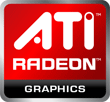ATI Radeon HD 5670: DX11 For Under $100
ATI Radeon HD 5670

If you have already read our coverage of the Radeon HD 5800 series launch, then the above block diagram should look somewhat familiar to you. As we've already mentioned, the new Radeon HD 5670 series GPU offers virtually all of the same features of 5800 series. The differences between the two are that the 5670 series is equipped with fewer SIMD engines, and hence fewer stream processors, fewer texture units, and ROPs and it has a narrower memory memory interface too.

To be more specific, the Radeon HD 5700 series GPU offers 5 SIMD engines, with 400 total Stream Processing Units, 20 Texture Units, and 8 ROPs with a 128-bit GDDR5 memory interface. The actual GPU is manufactured using TSMC's 40nm process and is comprised of approximately 627 million transistors.

ATI Radeon HD 5670 512MB Edition
The Radeon HD 5670 we'll be featuring in this article is the 512MB versions, pictured above. It is a single-slot card that features a relatively small heatsink / fan combo that cools the GPU and RAM mounted on the front. Typical idle board power is only 14w with peak power of around 61w, so there is no need for supplemental power connectors here--the 75w offered by a PCIe slot will do. The reference specifications call for a 775MHz GPU clock, with 1000MHz memory, for an effective data rate of 4Gbps. At those clocks, the Radeon HD 5670 offers a peak texture fillrate of 15.5GTexel/s, 6.2GPixels/s, with 64GB/s of memory bandwidth and up to 620 GLOPS of compute performance.
The outputs on the Radeon HD 5670 consist of a dual-link DVI output, an HDMI output (with audio) and a DisplayPort output. Any combination of these ports can be used simultaneously, and of course the card fully supports the ATI Eyefinity multi-display technology, with up to three displays.
The backside of the Radeon HD 5670 is exposed, but other than the myriad of surface mounted components there isn't much to see. The GPU heatsink retention bracket is visible right about in the center the PCB, nut where the card's CrossFire edge connectors are supposed to be there are none. AMD tells us the 1GB version will feature CF connectors, but the 512MB reference design does not. It is up to board partners, however, whether or not to outfit their cards with CF connectors. Please note, that CrossFire is still supported with two of the cards pictured here; transactions will be sent over the PCIe interface, instead of the CrossFire bridge.



Coming Soon - The Radeon HD 5500 and 5400 Series
The Radeon HD 5670 is designed to be affordable, but lower priced offerings are in the works as well. The Radeon HD 5500 and 5400 series cards will be debuting soon as well, to complete AMD's top-to-bottom line-up of DirectX 11 class cards. Full specifications, features, and pricing aren't available just yet, but expect the half-height 5500 and 5400 series cards to fall into the $49 - $80 price segments when they arrive.






